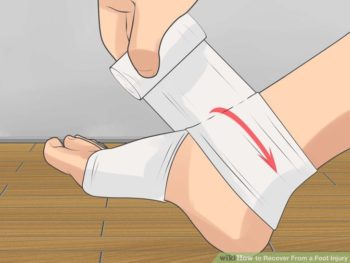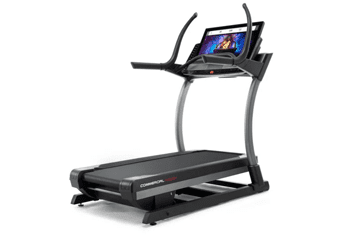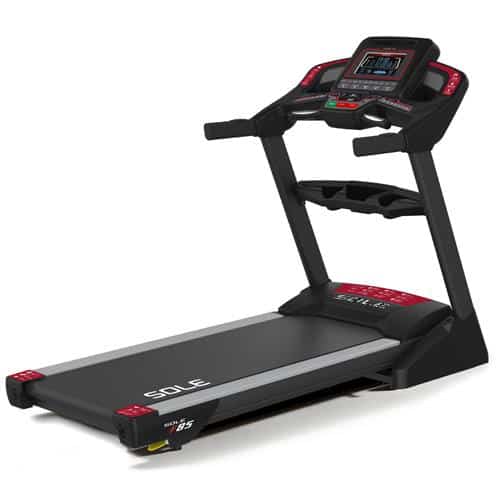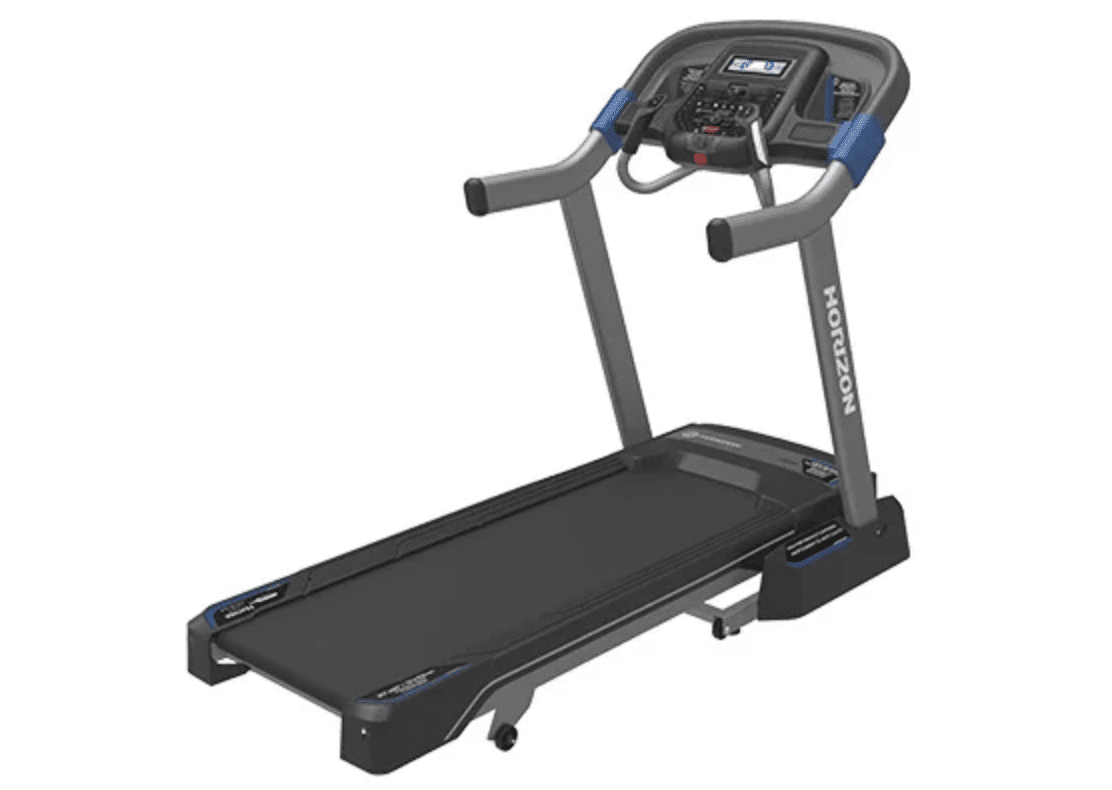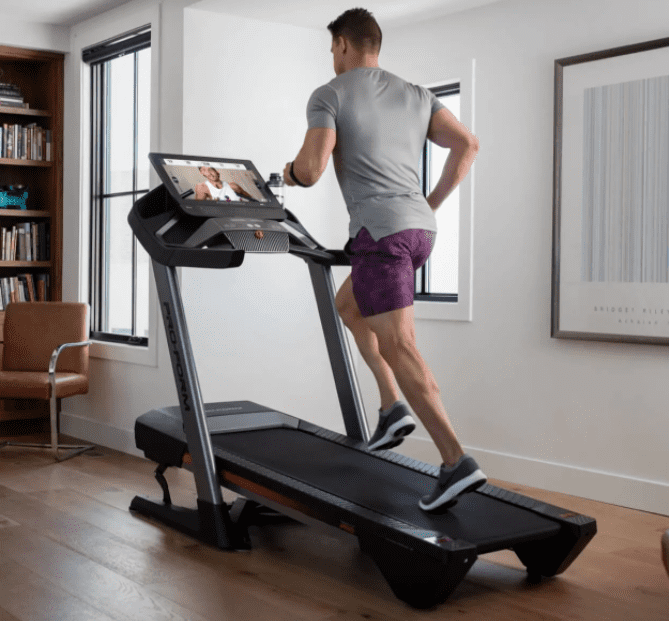Table of Contents
How to Find the Right Shoes & Recognize Common Foot Ailments
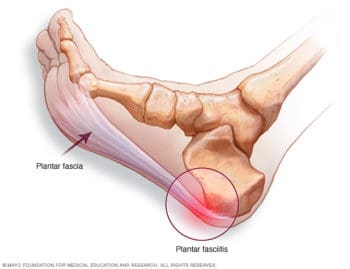
Plantar Fasciitis (Image Credit)
Painful feet are impossible to ignore when you’re working out on a treadmill. With each step, your feet strike the ground with a force equal to 3-5 times your body weight. That means a 150 lb person will experience 450-750 lbs of force per leg per step. It’s no wonder we can experience painful side effects!
How the Right Running Shoes Can Protect Your Feet
One of the best things you can do to minimize pain or injury is make sure that you’re in the right type of shoe. People often make the mistake of using time as an indicator of when it’s time to get new sneakers. Really, you should use distance as your indicator.
If a pair of shoes is older than 400-600 miles, then chances are, you’re ready for a new pair. Be on the lookout for sharply defined creases in the outside foam of your sneaker. Also, be aware of any ‘off-feelings’ like unusual pains in your knees or hips. These could be signs that you need new sneakers.
Important Features on a Good Running Shoe
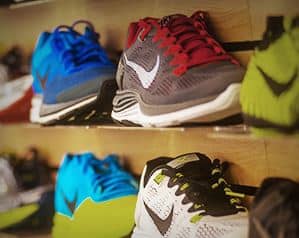
Salesmen often look to see your pronation angle or how much you turn your foot in while running. Often, people with flatter feet, tend to pronate while those with higher arches have a more neutral impact. Still, there are exceptions so it’s good to have a professional take a look.
The ‘drop’ of the shoe is another important feature to consider. Most shoes have a 10-12 mm height difference between the heel and the forefoot. Shoes with too small of a drop (like 4-6 mm) can put extra strain on the Achilles tendon or calf muscles.
The salesman can also help you find the right shoe for your type of running. If you are mostly running on the treadmill, you will likely want a road running shoe with a soft midsole and less aggressive tread. Among road running shoes, you can choose between mild stability, moderate stability, and motion control. Again, this all has to do with the shape of your foot, how you walk, and how your arch flexes.
If you plan to hit the trails when the weather warms up, you may want a trail running shoe with more tread and a stiffer design. Or, go to the other extreme and get a minimalist shoe to simulate barefoot running. Be cautious here because a sudden transition to a minimalist shoe can cause injury. Take it slow and get some advice before you proceed.
Learn More: Can you really get arthritis from life-long running?
5 Other Common Foot Problems for Runners
If your shoes are in order and you’re still experiencing foot problems, perhaps you have one of these common ailments:
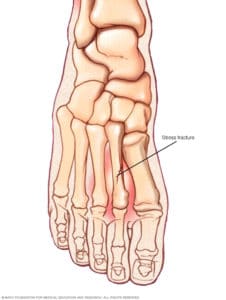
Stress Fracture (Image Credit)
Plantar Fasciitis –
The ligament (flat band of tissue) that connects your heel bone to your toes is called your plantar fascia. This is the part of your foot that supports your arch. If you strain this ligament it can become weak, swollen, and inflamed. It will hurt to stand or walk on your foot. This injury is more common in runners who roll their feet inwards (pronation), have high arches, or those with flat feet.
Stress Fracture –
This injury is most common with people who are overdoing it at the gym. Our bones are constantly breaking down and repairing on the microscopic level just like our body’s muscles. If small micro fractures are not given enough time to repair before the next load-bearing exercise, they can join together to form a larger stress fracture. These are common in the metatarsal bones, navicular bone, and in the heel bone. The first symptom is pain that develops towards the end of a workout and goes away with rest.
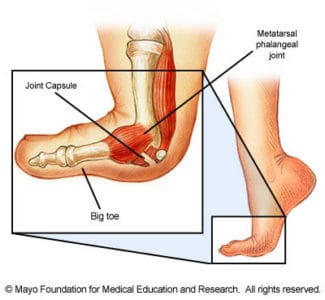
Turf Toe (Credit Mayo Foundation)
Turf Toe –
This injury involves a sprain to the ligament around the joint of the big toe. It is common in athletes who spend a lot of time on artificial ‘turf’ fields which are harder than regular grass. If the big toe joint is over-extended regularly the athlete may experience sudden pain, swelling and limited joint movement.
Athlete’s foot –
No one wants to have this annoying and painful foot rash, but it is the most common fungal skin infection. It is most often spread by walking barefoot around swimming pools or locker rooms. The skin on your feet and between your toes will burn and itch. Luckily non-prescription anti-fungal sprays provide an easy first step to treat this condition.
Blisters –
Blisters on your feet form when fluid
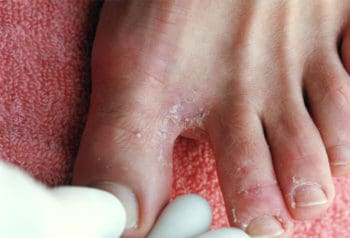
Athlete’s Foot (Image Credit)
collects under the top layer of skin due to friction with your shoe. Blisters are often filled with the clear watery part of your blood called serum. If a blister forms, try your best not to pop it. Usually your skin will absorb the fluid on its own. Then, keep the area clean and dry until it heels. If you are getting blisters from your shoes on a regular basis, you may want to reevaluate the fit of your shoes.
RICE: Basic Treatment for Foot Problems
We are not doctors, so we would first and foremost suggest that you consult with a qualified physician if you are experiencing ongoing foot pain. They can help you identify, treat, and avoid future occurrences of foot related injuries.
With that being said, we can recommend the RICE principle that may provide relief if you are experience running-related foot pain.
REST: At the first sign of a non-serious injury, you should rest and protect the injured area. Give yourself a break from whatever activity caused the pain. If you’ve been putting in the miles day after day on your treadmill, take a break and do some yoga to give your body some relief. (Be smart. If you suspect your injury is serious, seek medical attention immediately.)
ICE: Ice is an excellent tool to reduce pain and swelling. Apply an icepack to the injured area for 10-20 minutes several times a day. After 2-3 days, if the swelling is gone, switch to heat for pain relief.
COMPRESSION: Wrapping the injured foot in an elastic bandage can help decrease swelling. Be careful not to wrap too tightly or you can cause swelling below the injury. If this doesn’t help the problem in 2-3 days, talk to a doctor, because you may have a more serious injury.
ELEVATION: A final way to minimize swelling is to keep your injured foot at or above the level of your heart. Prop up your foot with pillows while icing.
Medicines like Ibuprofen (Advil) or Naproxen (Aleve) can also help reduce swelling and ease pain. Be safe and follow all label instructions. When in doubt, consult with a trainer or physician for any injury.

